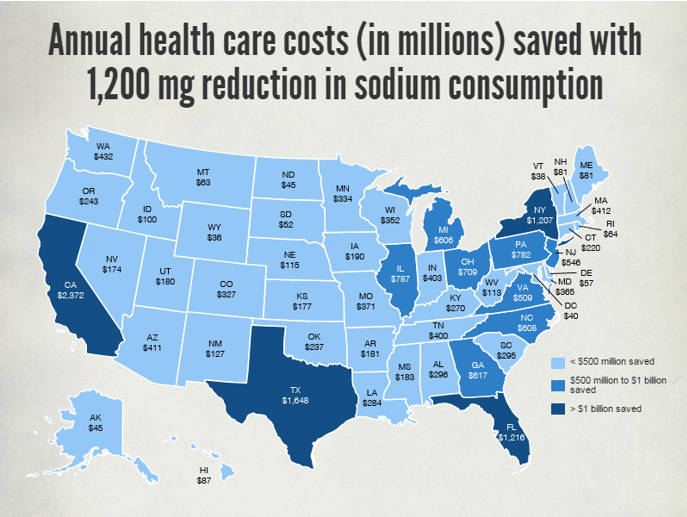Saving millions with sodium reduction

Washington state could save $432 million in health care costs if its residents would reduce their salt intake by half of a teaspoon per day.
A new analysis by the Center for Science in the Public Interest found reducing sodium intake in the U.S. would save states anywhere from $36 million to $2.4 billion in health care costs.
Americans currently consume about 3,500 milligrams of sodium – or about a 1 ½ teaspoons of salt – per day. Dietary guidelines call for a reduction to 2,300 milligrams of sodium – or about one teaspoon of salt – per day.
Excess sodium consumption boosts blood pressure, which is the leading cause of cardiovascular disease. The national health care costs for treating related illnesses “are enormous,” according to CSPI.
National medical savings range from $10 billion to $24 billion with a 1,200 milligram per day reduction in sodium intake, according to CSPI.
The Center for Science in the Public Interest calculated state-by-state savings with the recommended sodium reduction.
Four states could save more than $1 billion: California ($2.4 billion), Texas ($1.6 billion), Florida and New York ($1.2 billion, each).
Eight other states would save between $500 million and $1 billion: Illinois, Pennsylvania, Ohio, Georgia, North Carolina, Michigan, New Jersey and Virginia.
According to CSPI, Washington would save $432 million; Oregon would save $243 million.
Wyoming had the lowest potential savings – $36 million – followed by Washington D.C. ($40 million), North Dakota and Alaska ($45 million each), and South Dakota ($52 million).
